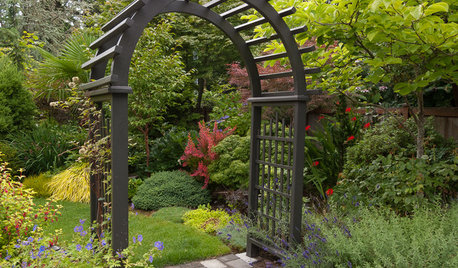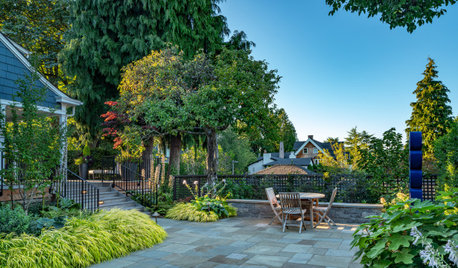I know that there are a lot of zone pushers in Minnesota, so i thought you would be interested in this information that I copied from a posting on the New England forum about growing stewartias in Maine:
Student Focus
New plants for Maine's cold climes
Japanese stewartia is a landscaping tree coveted for its year-round beauty. In the winter, it shows off its multicolored, textured bark. Its summertime blooms look like camellias, and its fall foliage features shades of yellow and red. The biggest drawback for Maine gardeners: Stewartia grows best in USDA Hardiness Zones 68. Maine has Zones 3Â5.
UMaine Today Cover
From the September / October 2005
Issue of UMaine Today Magazine
Researching ways to propagate stewartia in this state is the thesis project of graduate student Ajay Nair, part of ongoing collaboration among the University of Maine, an alumnus, and MaineÂs ornamental horticulture industry. Nair works with UMaine Associate Professor of Horticulture Donglin Zhang, whose research involves developing new plants to benefit MaineÂs horticultural industry.
Growing plants in Maine has many challenges, particularly their ability to over winter. ThatÂs why the extensive cold hardiness research going on at UMaine is so important. For instance, recent cold hardiness studies demonstrated that five cultivars of mountain laurel and more than 20 of Atlantic whitecedar can be grown in Zone 4 in central Maine. Such research provides technical guidance for growers and increased consumer confidence.
Nair and Zhang are working with one cold-tolerant clone named Stewartia UMaine (UMaine Silk Camellia), which has been growing well at the universityÂs Littlefield Ornamentals Trial Garden. The tree has brilliant red fall color and biennial flowering. Nair has been experimenting with different rooting media and propagation techniques using seeds, tissue cultures and stem cuttings. He coauthored a paper, with Zhang and graduate student Dongyan Hu, on the rooting and overwintering of stewartia stem cuttings that won first place in the graduate student and presentation competition at the Northeast Regional Meeting of the American Society for Horticultural Science in Washington, D.C. earlier this year.
"We hope to answer questions about propagation, especially the conditions needed for cuttings, so stewartia is easy to cultivate and more commercially viable," says Nair of the nonnative yet noninvasive species.
The three researchers have used DNA markers to determine the relativeness of Stewartia UMaine to 16 named Stewartia taxa. Working in cooperation with colleagues at Harvard UniversityÂs Arnold Arboretum, the researchers found that Stewartia UMaine is a new cultivar that originated from a gene pool of S. pseudocamellia, S. sinensis and S. koreana. These molecular results will be used as guidance for future Stewartia breeding. Their paper on the discovery won third place in the national graduate student poster competition at the annual American Society for Horticultural Science conference in Las Vegas in July.
Nair, who came to UMaine last year from Kerala Agricultural University in India, also works with University of Maine Cooperative Extension Ornamental Horticulture Specialist Lois Stack on experiments with phlox and rubeckia. They are investigating the effectiveness of plant growth regulators in preventing powdery mildew diseases, which can cause significant losses to growers each season.
Horticulture, including floriculture, is the fastest-growing sector of American agriculture. In 2003, Maine ornamental plant sales were valued at $100 million. Maine horticulture includes more than 780 firms, employing more than 10,000 people.







Greenthumb
Related Discussions
Stewartia malacodendron zone-pushing?
Q
Stewartia Monodelpha
Q
Nepeta/ cat mint propogation
Q
Any advice to help ensure successful propogation
Q